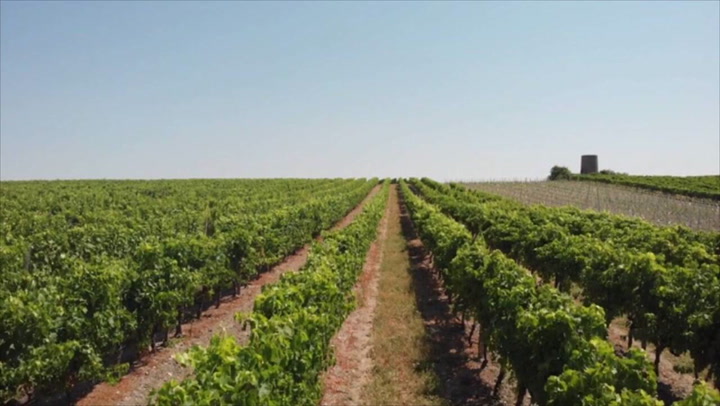Inside the magic and mystique of Cognac, France, including what to do, see, and drink while visiting.
Cognac is three things: a city in France, the region that surrounds it, and the name of the liquor that is, by definition, produced there. Distilled from white grapes that line its hillsides, Cognac is a type of brandy — and it must be made within strict geographical and regulatory boundaries in order to be labeled as such.
Cognac’s History
:max_bytes(150000):strip_icc():format(webp)/cognac-saint-preuil-COGNACFR0821-847070c335bf4745866fcf2f8a25dfd8.jpg)
Cognac, an approximately four-hour train ride from Paris, is worth at least a weekend jaunt. Visitors here will find 17th- and 18th-century Cognac houses, rising out of the woods like something out of “Beauty and the Beast.” High-walled and turreted, these chateaus were once the homes of famous founders: Martell, Courvoisier, and Hennessy.
Today, they’re no longer residential and now house corporate guests. However, inside, velvet armchairs, meticulous plaid, and crackling fires still offer a fantasy of old-world France. While they’re not open for tours, distilling rooms are — and that’s where the Cognac can be found.
:max_bytes(150000):strip_icc():format(webp)/vines-bourgoin-cognac-COGNACFR0821-4112511ef5a745adbc89aa9f7dde001f.jpg)
Here, you can spy 200-year-old bottles — and if you’re up for it, blend your own, too. These cellars provide relatively uncrowded access when compared to more frequented grape-growing regions, like Bordeaux.
However, Cognac isn’t quite off the beaten path. The region gained commercial importance starting 1,000 years ago, with success in the salt trade, and later, spirits. Despite its historical significance, its rustic locale is undoubtedly less frequented by international tourists. Many visitors are here on business, which is overwhelmingly related to Cognac production and includes everything from distilling to distributing and barrel making.
Visit Artisan Distillers
:max_bytes(150000):strip_icc():format(webp)/bourgoin-cognac-exterior-COGNACFR0821-b244dd99bd4541fea1c3aed4ae552e4d.jpg)
The first thing to know is that, despite the legacy producers that still dominate the economy here, it’s a fertile ground for startups as well. Moreover, there’s actually a growing number of small-scale gin distillers, thanks to a nexus of operational know-how and easy access to equipment, as well as the rising popularity of gin in the past decade or so.
While Audemus Spirits doesn’t have a public-facing distillery — it takes pride in producing out of the founder’s living room — its Pink Pepper Gin is not to be missed and can be found at shops throughout France, including Paris.
:max_bytes(150000):strip_icc():format(webp)/bourgoin-cognac-COGNACFR0821-a929d5c7b99f4315aa1f7441a12038de.jpg)
If you’re craving small-batch Cognac, try Bourgoin Cognac. The family-run company is helmed by a heartfelt, hardworking husband and wife duo: Frédéric Bourgoin, of the brand’s namesake, and an ex-Courvoisier executive, Rébecca Asseline. The company hosts family-led tours and handcrafts its spirits in an intimate manner that larger brands find hard to match.
Tour Old World Cognac Houses
:max_bytes(150000):strip_icc():format(webp)/courvoisier-exterior-COGNACFR0821-35145a4f54da426c821754406103796e.jpg)
Where the larger brands do reign supreme, however, is legacy. With roots in the 18th or 19th centuries, they’ve seen regimes rise and fall — and have often been witness to historic moments. Courvoisier is one such brand: Long before it was a mainstay in rap songs, it was enamored by Napoleon. A good chunk of the museum’s artifacts are dedicated to this more than 200-year-old history, complete with dust-riddled bottles and wax stamps. The most affordable visit here, which includes complimentary tastings and a tour for less than 20 euros, is quite a good value. The company also offers higher-priced packages that delve deeper into its cellars.
:max_bytes(150000):strip_icc():format(webp)/courvoisier-french-twist-COGNACFR0821-bb6add9b833d4f9f9225d987b6d630e9.jpg)
Courvoisier’s museum and tasting room is picturesquely located on the banks of the Charente river. This is not by accident, as this waterway was key to the region’s success, enabling it to transport goods — including and especially Cognac — throughout France and beyond.
Of all the big-name Cognac brands, Hennessy’s tasting room is perhaps the most grand, in proportion to its market share — it is the largest Cognac company. Starting at 25 euros, its most affordable tour offers a chance to blend your own Cognac with the expertise of a guide — an experience not to be missed. Consequently, even for those who aren’t big into brandy, spirits, or alcohol, tasting Cognac at one of these places offers an educational journey in gastronomy and history.
:max_bytes(150000):strip_icc():format(webp)/courvoisier-distillery-COGNACFR0821-669c6c3b71904b6fb9305620bbb2e113.jpg)
However, the region’s charm isn’t relegated to the liquor it produces. It’s possible to enjoy your visit here without ever tasting a drop of the stuff. The old town is quaint, and walking along its banks is a delight. Like most of France, good wine and a decent charcuterie board can be found in just about every brasserie here. Le Bistro de Claude and La Maison are two budget and pricier options, respectively. Either way, sipping Cognac in Cognac is a special thing, and it’s what really lends impetus to a trip here.
Note: Some tasting rooms may be closed due to the pandemic. Confirm their availability before planning your visit.




